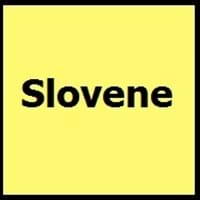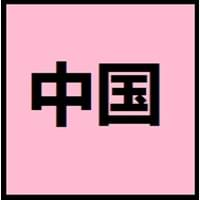Slovene vs Chinese
Countries
European Union, Slovenia
China, Hong Kong, Macau, Singapore, Taiwan
National Language
Austria, Croatia, Hungary, Italy, Slovenia
China, Taiwan
Second Language
Not spoken in any of the countries
Republic of Brazil
Speaking Continents
Europe
Asia
Minority Language
Austria, Hungary, Italy
Indonesia, Malaysia
Regulated By
Slovenian Academy of Sciences and Arts
Chinese Language Standardization Council, National Commission on Language and Script Work, Promote Mandarin Council
Interesting Facts
- The Freising Monuments is the oldest preserved records of written Slovene from 10th century.
- The first Slovene book was printed in 1550.
- Chinese language is tonal, since meaning of a word changes according to its tone.
- In Chinese language, there is no grammatical distinction between singular or plural, no declination of verbs according to tense, mood and aspect.
Similar To
Serbo-Croatian
Not Available
Derived From
Not Available
Not Available
Alphabets in
Slovene-Alphabets.jpg#200
Chinese.jpg#200
Scripts
Latin
Chinese Characters and derivatives
Writing Direction
Left-To-Right, Horizontal
Left-To-Right, Horizontal, Top-To-Bottom
Thank You
Hvala
谢谢 (Xièxiè)
How Are You?
Kako se imate?
你好吗? (Nǐ hǎo ma?)
Good Night
Lahko noč
晚安 (Wǎn'ān)
Good Evening
Dober večer
晚上好 (Wǎnshàng hǎo)
Good Afternoon
Dober dan
下午好 (Xiàwǔ hǎo)
Good Morning
Dobro jutro
早安 (Zǎo ān)
Sorry
Oprostite
遗憾 (Yíhàn)
Bye
Nasvidenje
再见 (Zàijiàn)
I Love You
Ljubim te
我爱你 (Wǒ ài nǐ)
Excuse Me
Oprostite
劳驾 (Láojià)
Dialect 1
Prekmurje Slovene
Mandarin
Where They Speak
Hungary, Slovenia
China, Malaysia, Singapore, Taiwan
Where They Speak
Italy
China, United States of America
How Many People Speak
Not Available
Where They Speak
Slovenia
China, Malaysia, Singapore, Vietnam
How Many People Speak
Not Available
Speaking Population
Not Available
Second Language Speakers
Not Available
Native Name
Not available
中文 (zhōngwén)
Alternative Names
Slovenian, Slovenscina
Not Available
French Name
slovène
chinois
German Name
Slowenisch
Chinesisch
Pronunciation
[slɔˈʋèːnski ˈjɛ̀ːzik], [slɔˈʋèːnʃt͡ʃina]
Not Available
Language Family
Indo-European Family
Sino-Tibetan Family
Subgroup
Not Available
Not Available
Branch
Not Available
Not Available
Early Forms
No early forms
No early forms
Standard Forms
Slovene
Standard Chinese
Language Position
Not Available
Signed Forms
Not Available
Wenfa Shouyu 文法手語 ("Grammatical Sign Language", Signed Mandarin (Taiwan))
Scope
Individual
Individual
ISO 639 6
Not Available
Not Available
Glottocode
slov1268
sini1245
Linguasphere
53-AAA-f
79-AAA
Language Type
Living
Living
Language Linguistic Typology
Not Available
Subject-Verb-Object
Language Morphological Typology
Fusional
Analytic, Isolating
Slovene and Chinese Language History
Comparison of Slovene vs Chinese language history gives us differences between origin of Slovene and Chinese language. History of Slovene language states that this language originated in 972-1093 whereas history of Chinese language states that this language originated in 1250 BC. Family of the language also forms a part of history of that language. More on language families of these languages can be found out on Slovene and Chinese Language History.
Slovene and Chinese Greetings
People around the world use different languages to interact with each other. Even if we cannot communicate fluently in any language, it will always be beneficial to know about some of the common greetings or phrases from that language. This is where Slovene and Chinese greetings helps you to understand basic phrases in Slovene and Chinese language. Slovene word for "Hello" is Halo or Chinese word for "Thank You" is 谢谢 (Xièxiè). Find more of such common Slovene Greetings and Chinese Greetings. These greetings will help you to be more confident when conversing with natives that speak these languages.
Slovene vs Chinese Difficulty
The Slovene vs Chinese difficulty level basically depends on the number of Slovene Alphabets and Chinese Alphabets. Also the number of vowels and consonants in the language plays an important role in deciding the difficulty level of that language. The important points to be considered when we compare Slovene and Chinese are the origin, speaking countries, language family, different greetings, speaking population of these languages. Want to know in Slovene and Chinese, which language is harder to learn? Time required to learn Slovene is 44 weeks while to learn Chinese time required is 88 weeks.





